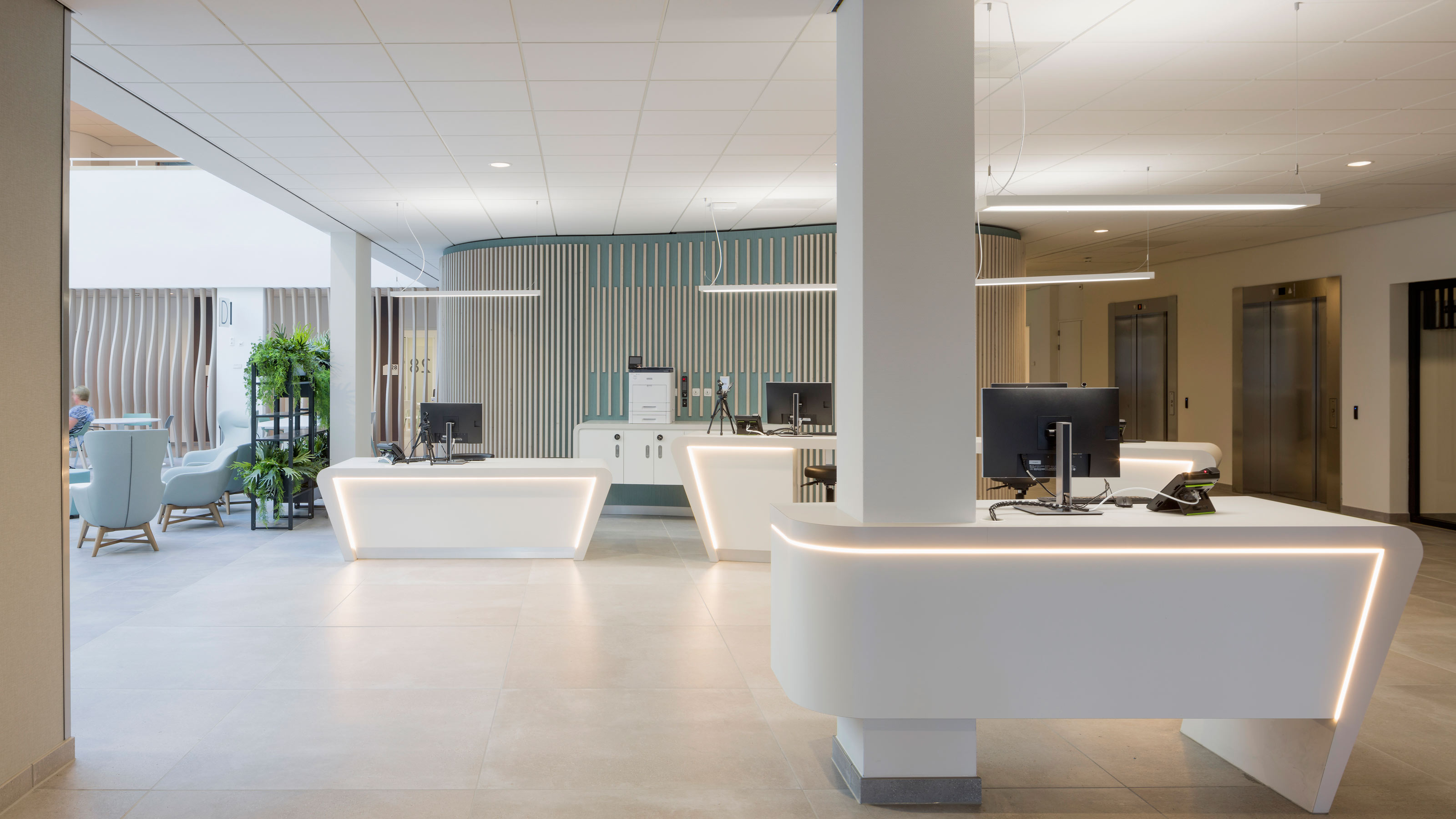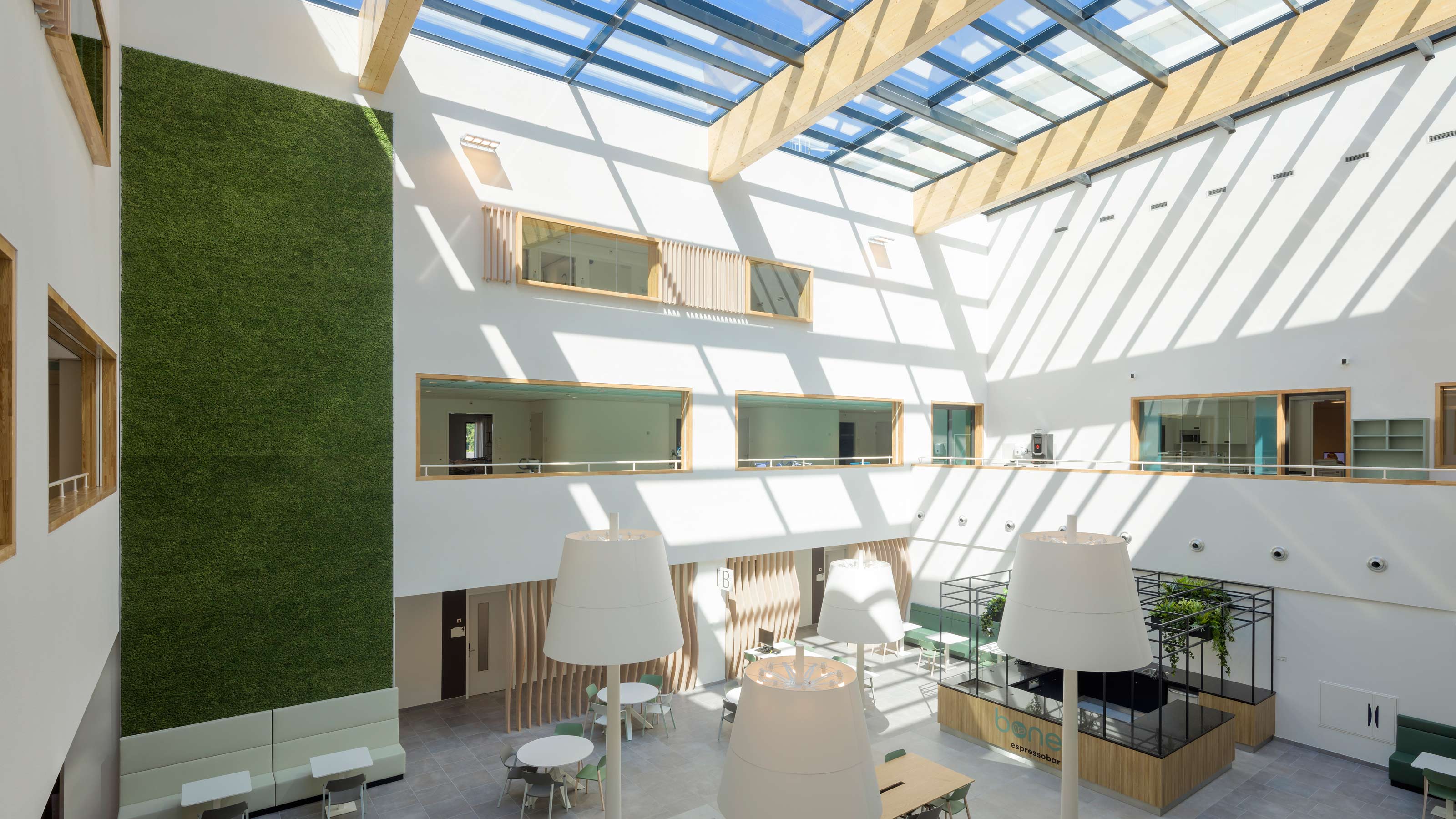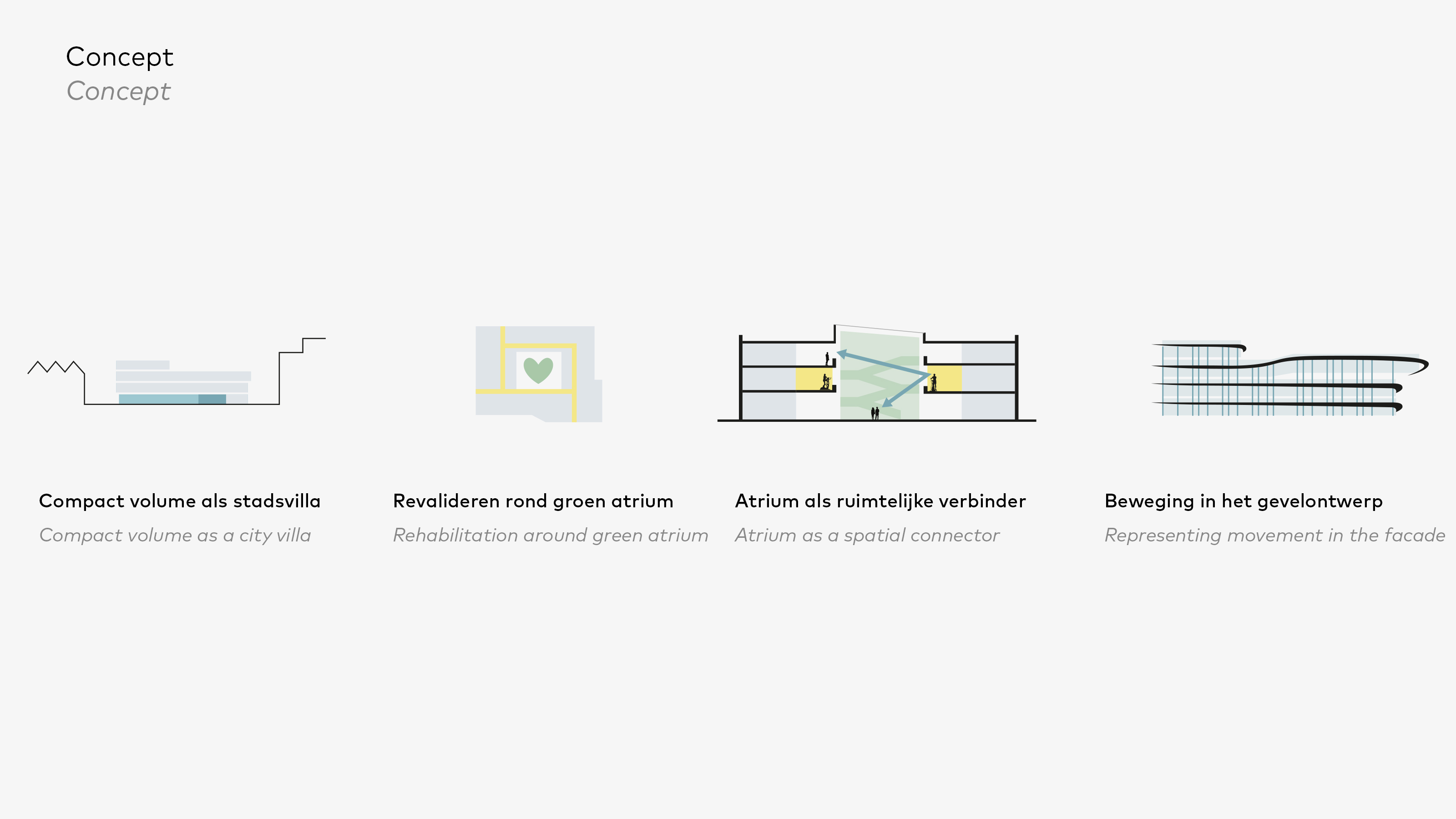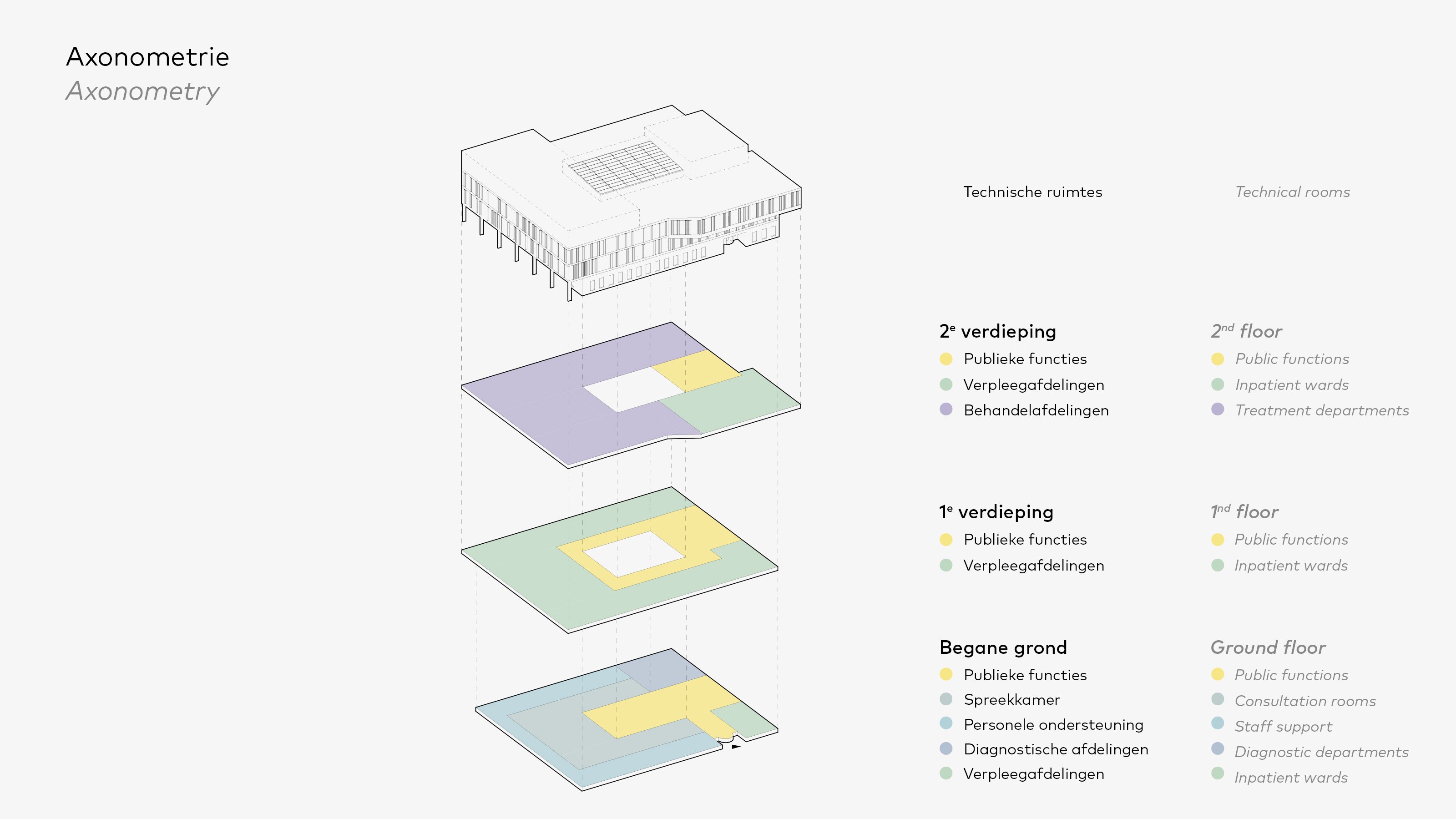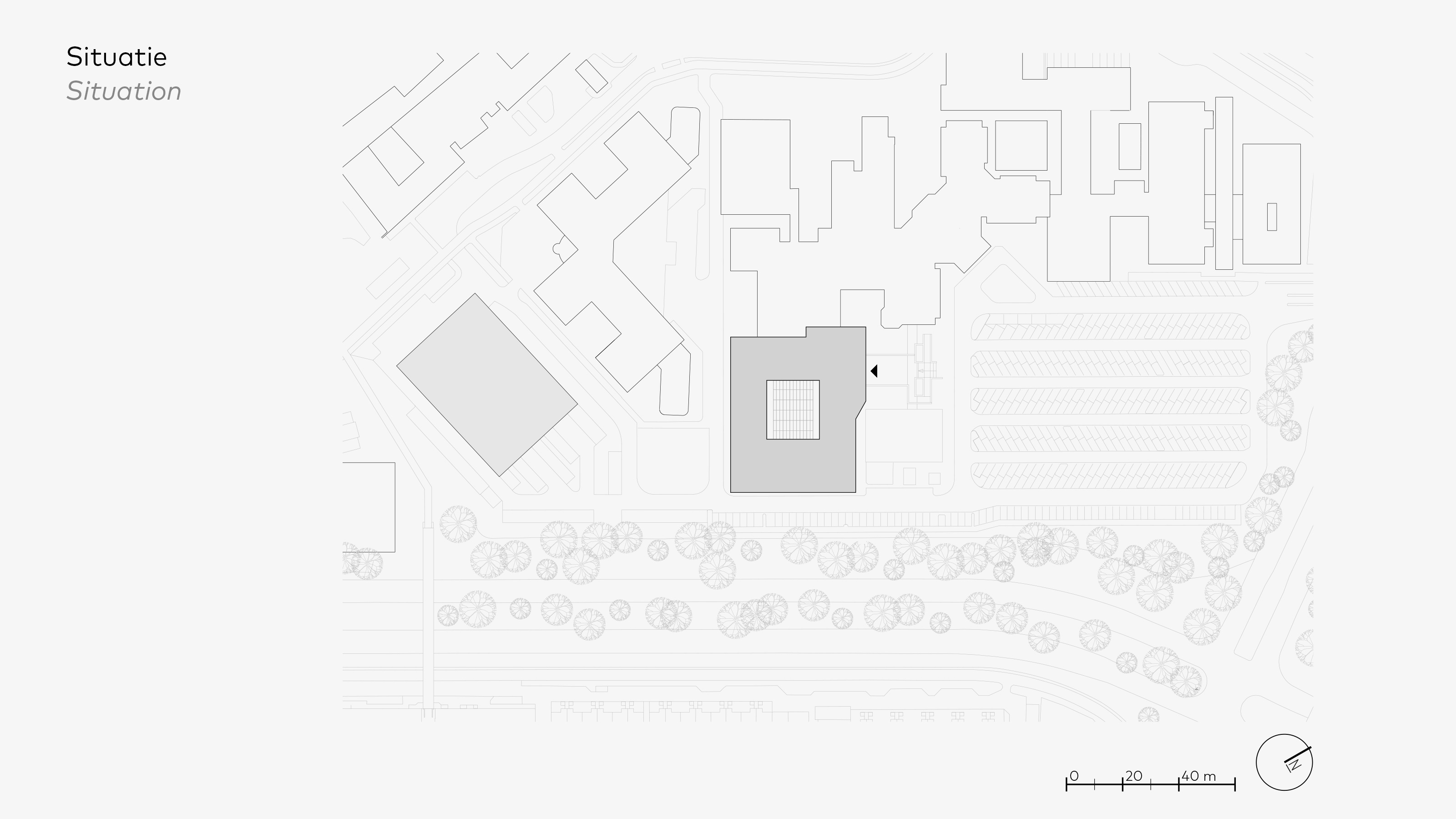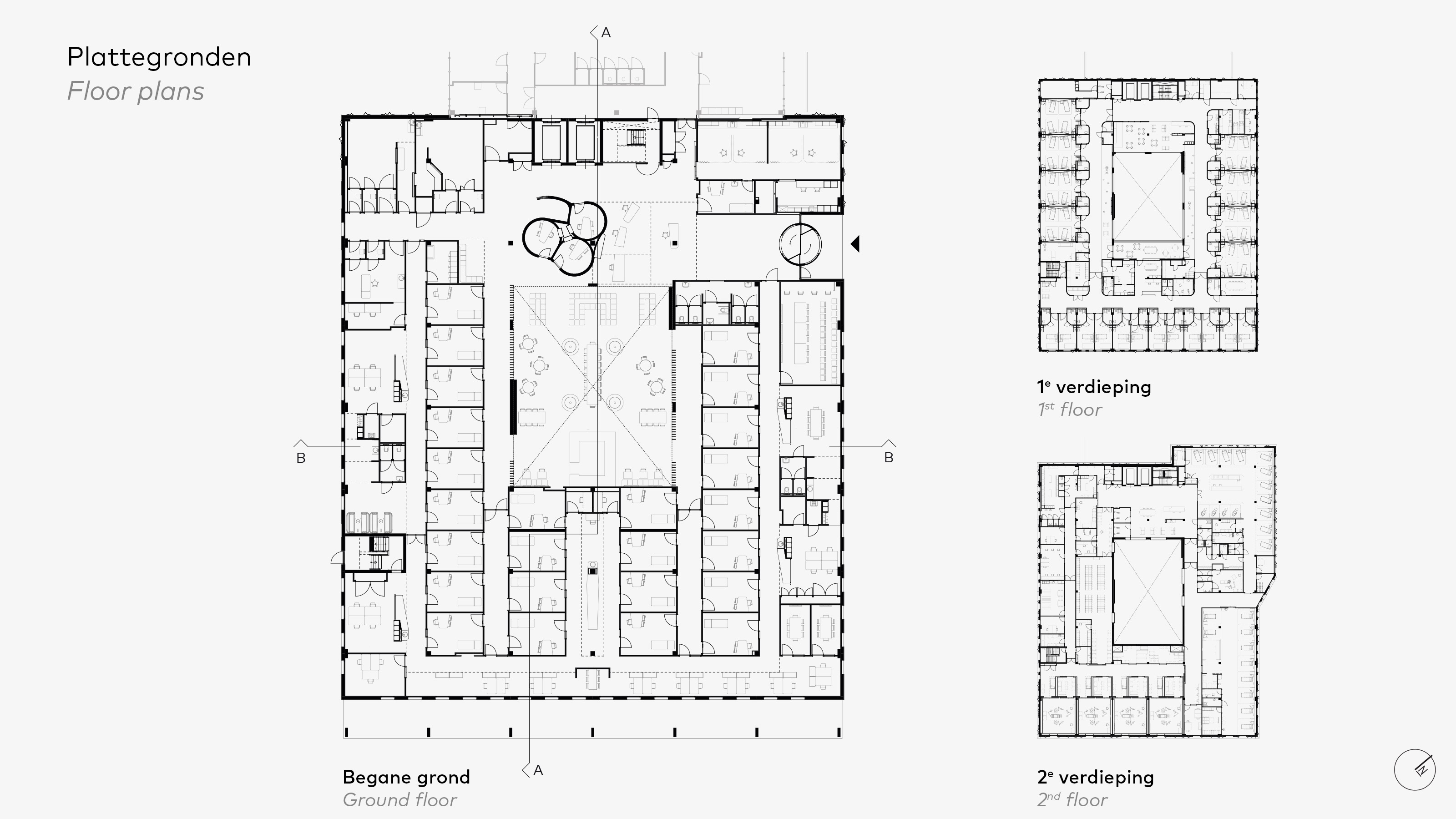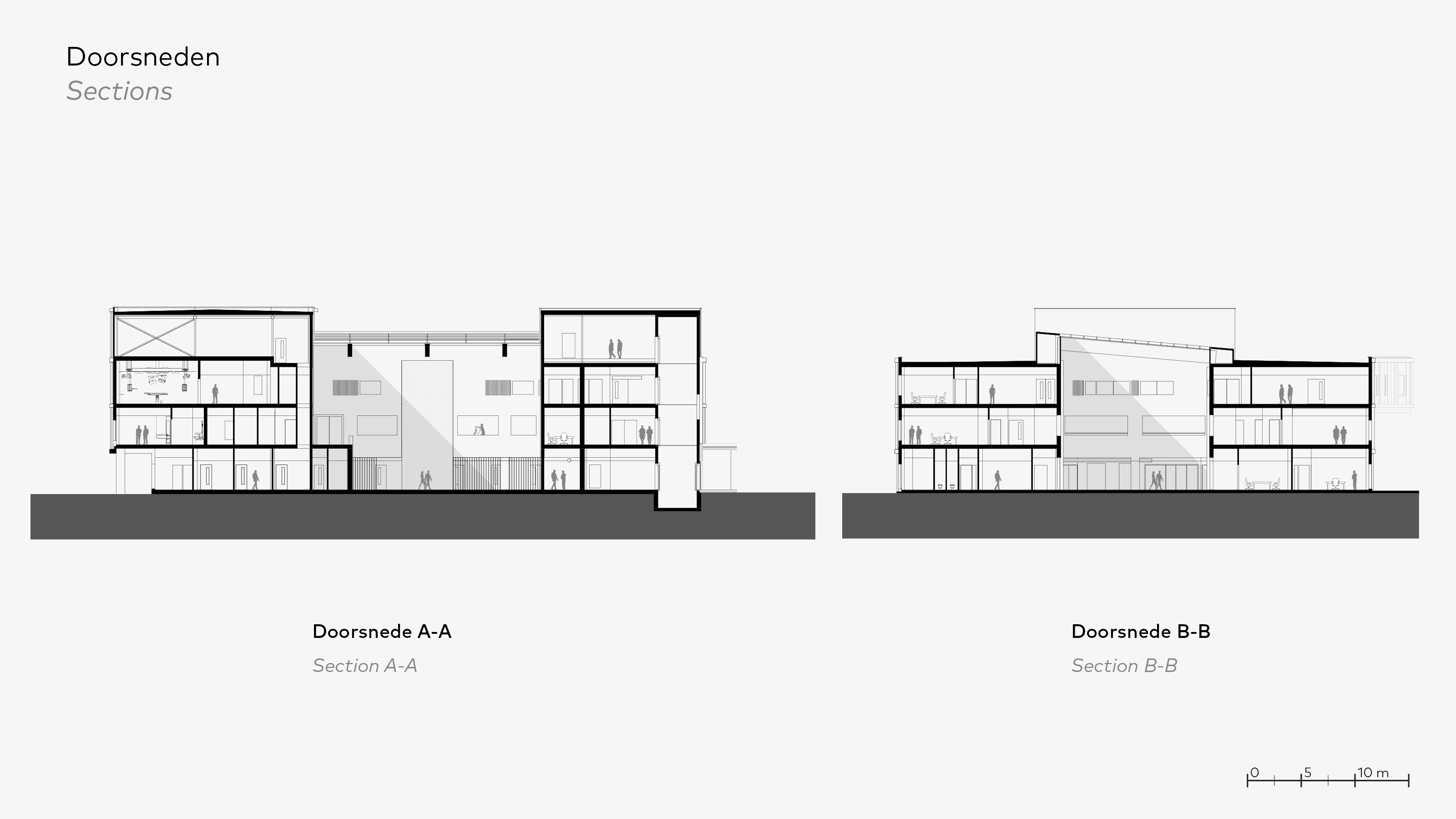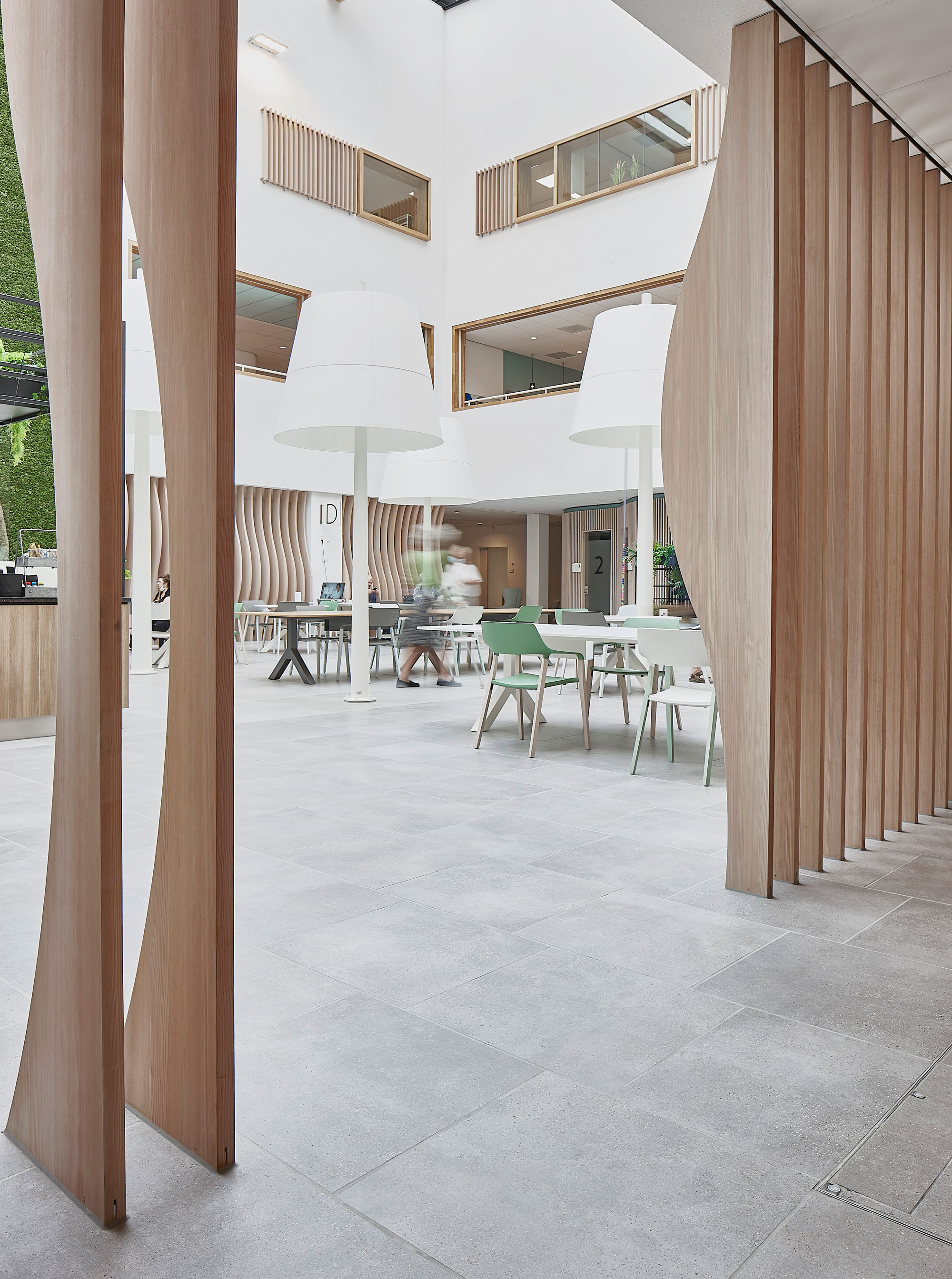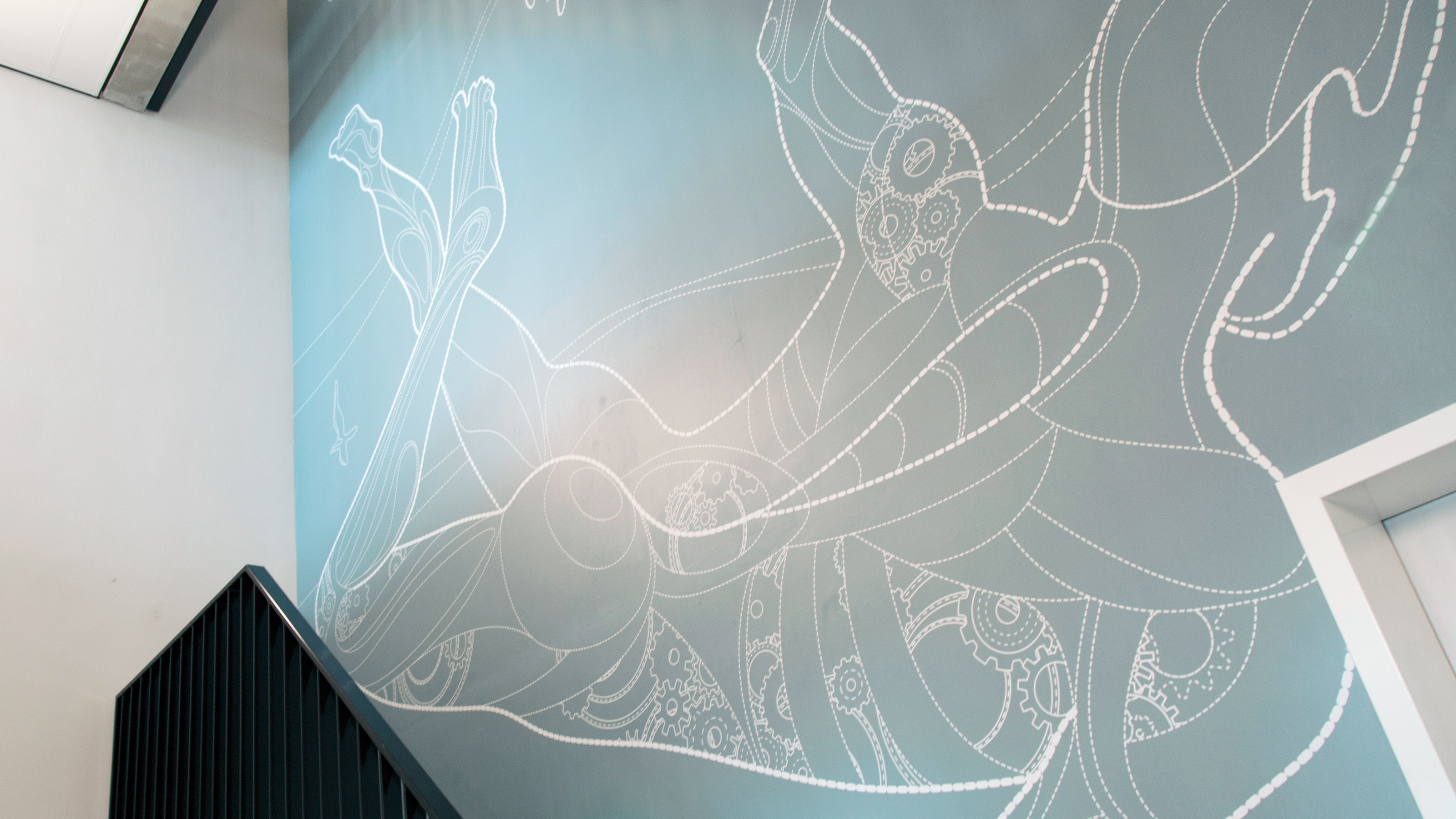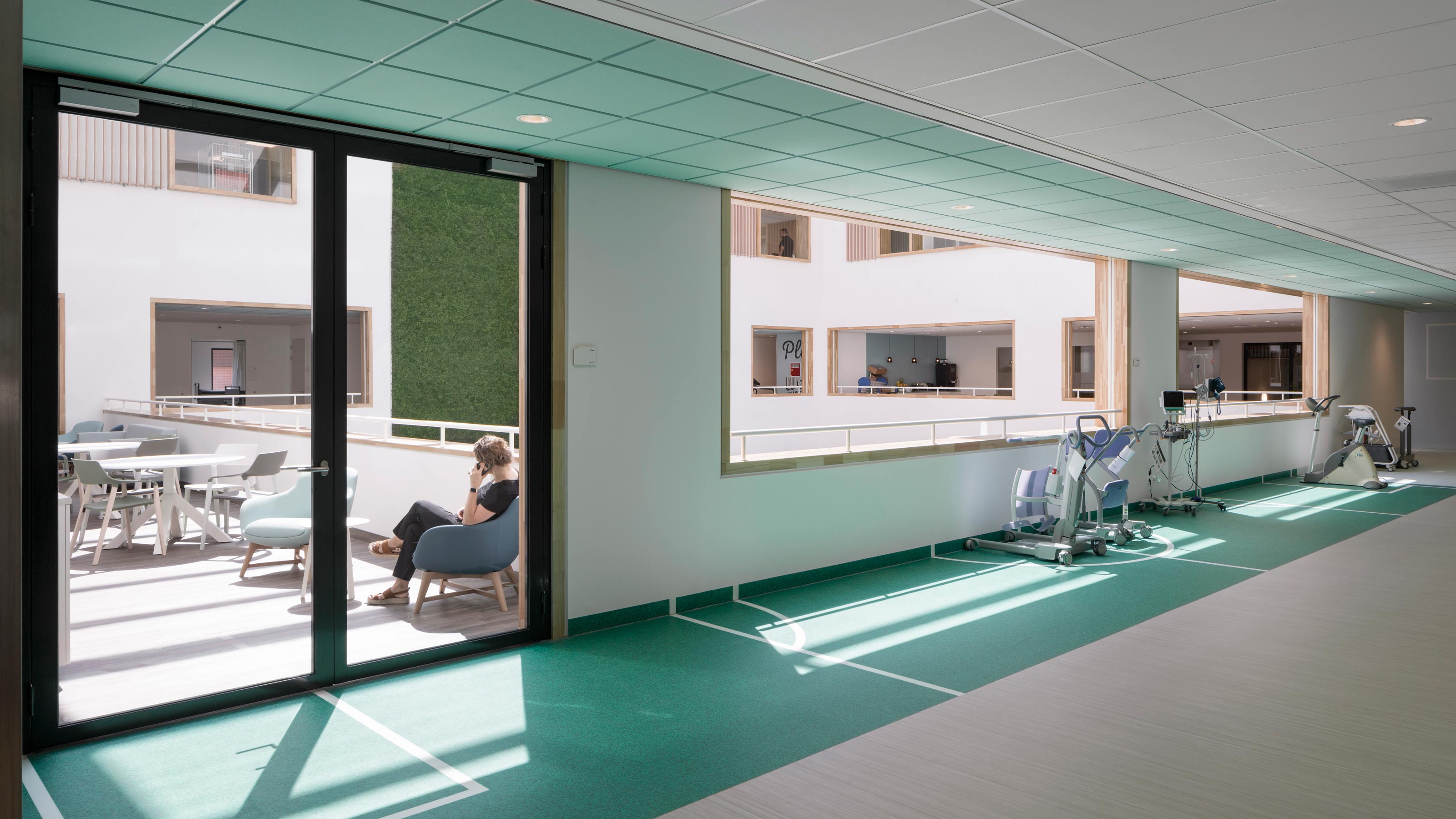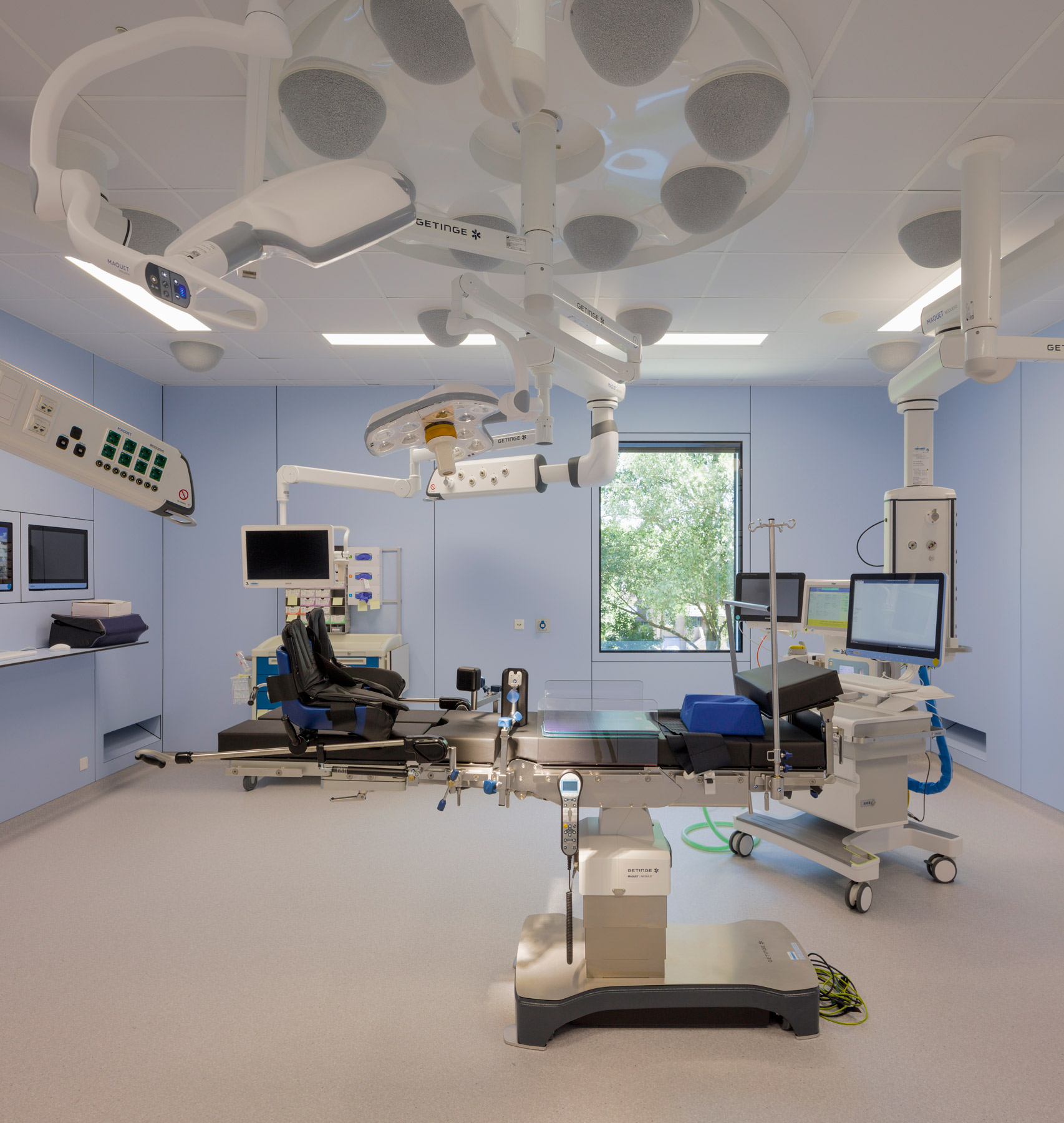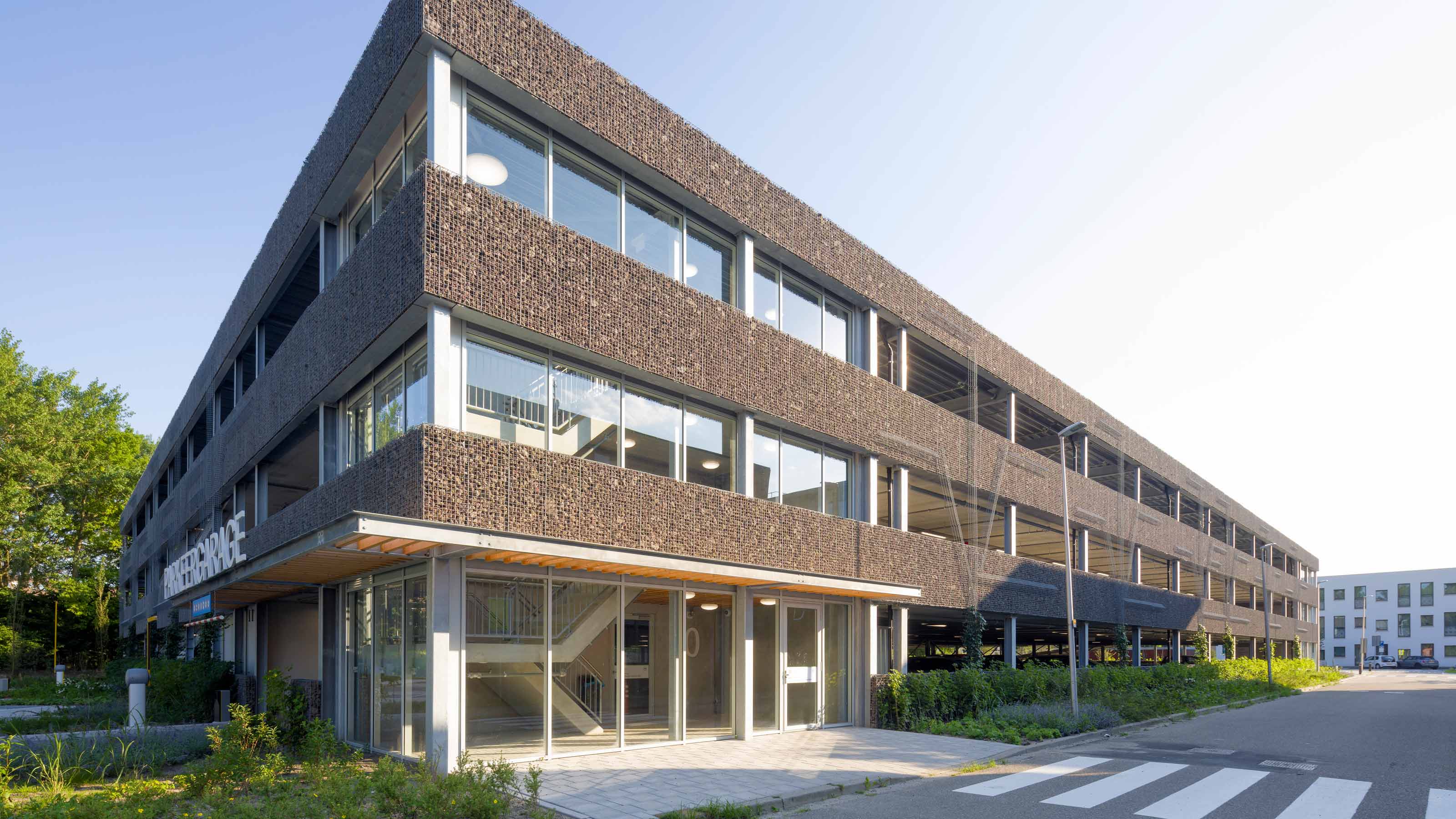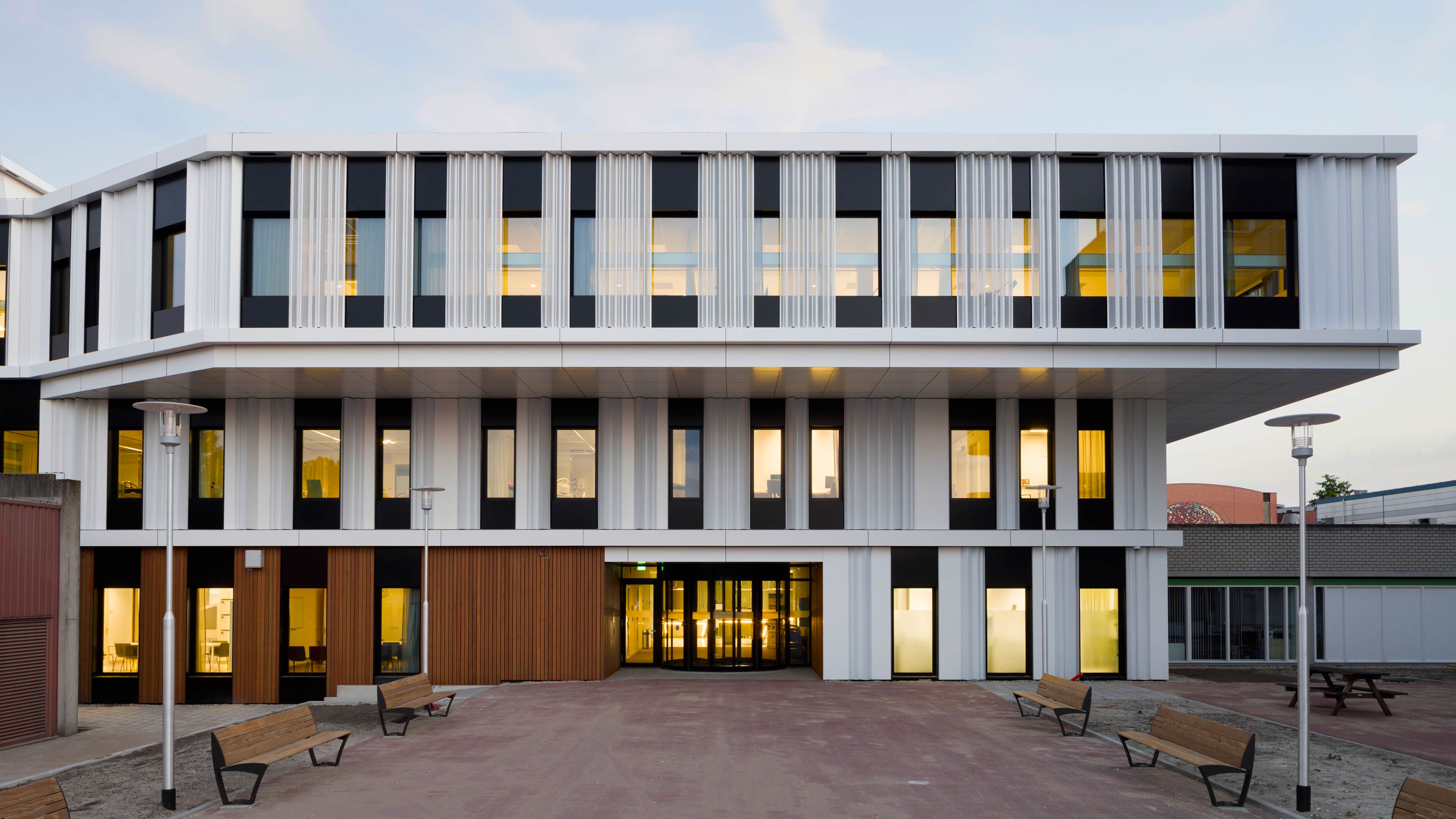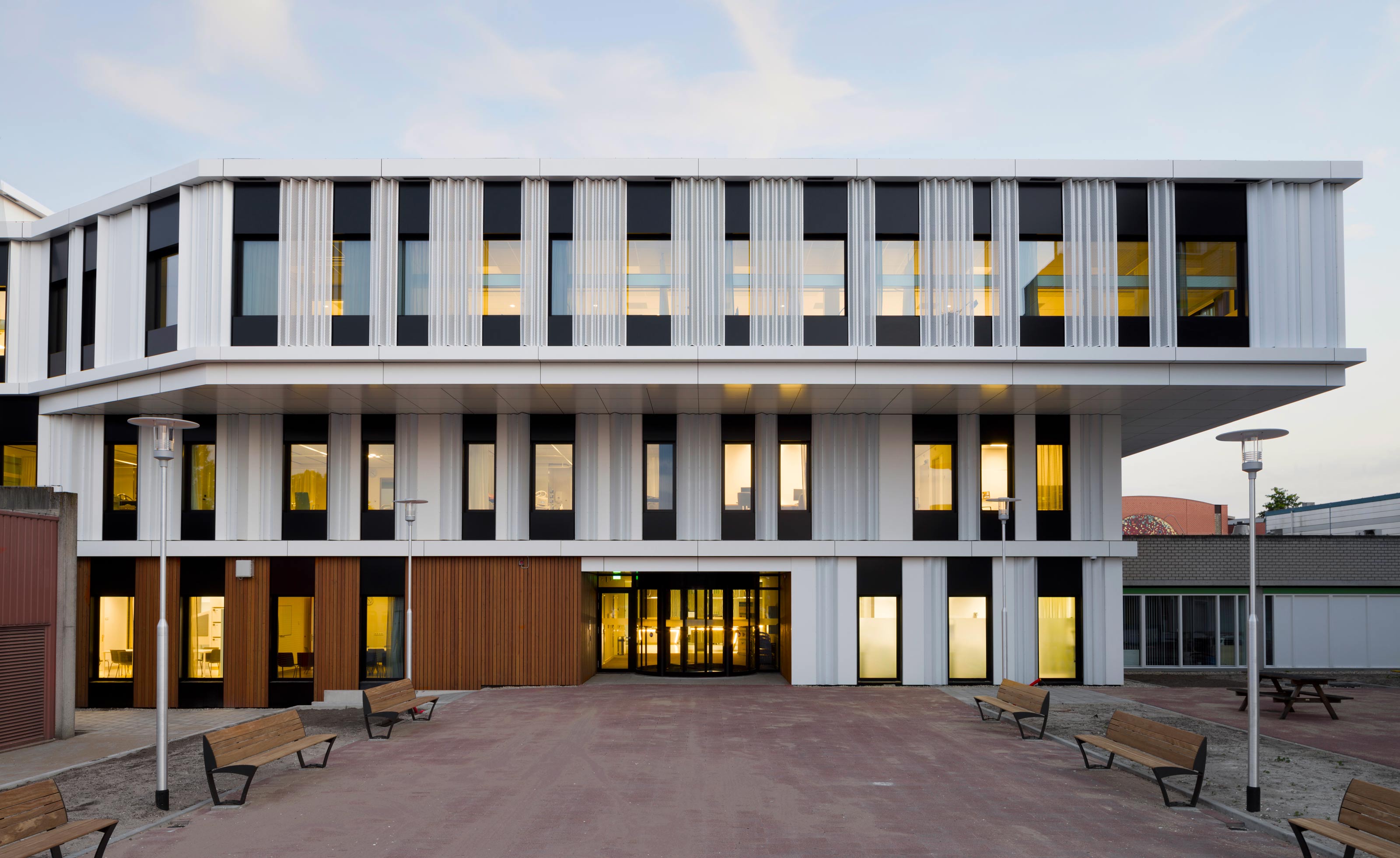
Reinier Haga Orthopaedic Clinic
New specialist orthopaedic clinic takes a big step in enhancing the quality of specialist care in the Netherlands, Zoetermeer
Highly specialised, exceptionally people-focused, and ultra-modern
A qualitative and quantitative expansion of Zoetermeer’s existing healthcare offerings
View the entire projectIn the heart of Zoetermeer’s healthcare district, the new Reinier Haga Orthopaedic Centre (RHOC) has opened its doors. This 7,500 m² specialist orthopaedic clinic is located within the healthcare hub of Zoetermeer, where various primary and secondary care facilities are housed. The clinic is connected to the adjacent LangeLand Hospital (LLZ) and efficiently utilises all supplementary medical services provided by the hospital when necessary. Together with the hospital, the RHOC constitutes a significant qualitative and quantitative expansion of the existing healthcare services. With 20 experienced orthopaedic specialists from three hospitals – Reinier de Graaf Gasthuis, HagaZiekenhuis, and LangeLand Hospital – this top-tier clinic is the largest orthopaedic surgery centre in the Netherlands. It represents a major step forward for the quality and future of specialist care in the country.
Luxurious urban villa – hotel on the outside, healthcare on the inside
The new RHOC features a compact, urban, and contemporary main building with a clearly recognisable entrance. The elegant white, wavy façade panels drape around the building like a glass curtain, with rhythmically designed window patterns reflecting the innovative and progressive work inside. The cantilevered second floor naturally forms a canopy above the main entrance. This design not only adds depth and extra space to the operating complex on the second floor but also provides a contemporary and distinctive identity to the main entrance. The large windows in this overhang allow daylight to flood in, fostering recovery and helping patients feel more connected to the outside world and their journey home. The three-storey building is designed to align with the surrounding architecture, blending seamlessly into the location.
The overarching theme of orthopaedics – ‘movement’ – is reflected not only in the care processes but also in the exterior and interior design of this top clinic.
Patricia Jaeger, Director of RHOC
Everything at the RHOC is designed to encourage patients to move throughout the building. To achieve this, staircases are adorned with inspiring artworks to encourage use, while lifts are strategically placed behind these staircases. Flowing movements, subtle linear patterns in the exterior façades and interior wooden walls, abundant natural light, curving wooden slats, and an inviting espresso bar in the atrium all contribute to the holistic approach of encouraging and motivating movement.
Personal approach from the moment of arrival
The clinic places a strong emphasis on a people-focused approach. Upon arrival on the ground floor, patients are greeted not at a traditional central reception desk but at four modern, compact desks where friendly staff provide personalised assistance. Visitors are naturally guided towards the spacious, light-filled atrium – the heart of the building. This atrium is a defining feature of the RHOC’s interior design. With abundant natural light from its glass ceiling, fresh and energising colours, wooden privacy screens, living green walls, four oversized ‘lampshades’, inviting seating areas, and visibility to the upper floors, the atrium connects all functions within the building. It also offers a calm and attractive waiting area. Surrounding the central atrium on the ground floor are public-facing functions such as consultation and examination rooms, as well as outpatient clinics.
Reactivation zones adjacent to private and shared patient rooms
Reactivation zones have been created outside the patient rooms along the central pathways around the atrium. In these spaces, patients work on their recovery under the supervision of physiotherapists. The RHOC is renowned for its swift care pathways, designed to help patients recover and return home as quickly as possible. For those who need to stay longer, there are options for single- or four-bed rooms. The four-bed rooms feature slightly angled rear walls, offering patients a degree of visual separation for enhanced privacy. Adjustable LED lighting ensures optimal comfort, while all rooms provide views of both the outdoors and the reactivation zones by the atrium. This encourages recovery and motivation while maximising the experience of natural light and greenery throughout the building.
We want patients to feel like they are stepping into a hotel. Everything is focused on making their stay as pleasant as possible.
Patricia Jaeger, Director of RHOC
Ultra-modern operating theatres with daylight access
On the second and top functional floor, the day treatment area and the RHOC’s four flagship operating theatres are located. Each theatre, approximately 50 m² in size, is optimally designed for safe and efficient orthopaedic procedures. The innovative Opragon air treatment system provides highly purified air with a consistent sterile quality across all theatres. Large screens allow surgeons, assistants, and even patients to follow the procedure. Theatres also feature large windows, providing daylight and views of the outdoors, which are essential for maintaining a natural sense of day and night during long procedures. LED lights and individually selectable calming background music enhance comfort and create an ideal environment.
Sustainability and innovation
The innovative air treatment system ensures highly purified air in sterile operating theatres. The RHOC’s compact design and circular materials optimise sustainability. The new building is designed with maximum flexibility to allow future adjustments, both structurally and technically. Energy-efficient, low-maintenance systems – including four heat pumps that simultaneously produce heating and cooling – minimise energy demand and maximise lifespan. Solar shading, climate ceilings, and smart insulation minimise heating and cooling needs. The amount of ventilation is responsive, based on the number of people in a room, ensuring energy-efficient operation.
Sustainable lava stone parking garage
Next to the RHOC, a new car park accommodating approximately 356 vehicles has been constructed for visitors to the facility. Noise generated by entering and exiting vehicles has been minimised through specific and sustainable design choices. The garage façade features mesh panels filled with lava stones, which optimise sound absorption and acoustics. The lava stones’ gradient colour pattern, transitioning from dark to light, gives the car park an appealing appearance. Their moisture-retaining properties also support the growth of greenery planted along the façade, which will flourish over time. This enhances biodiversity, air quality, and sound absorption.
The RHOC and its adjacent car park were designed by EGM Architects. Valstar Simonis provided the design for the technical installations, and Royal HaskoningDHV served as the structural engineer.
Awards
Gemma Smid Architecture Prize 2020 – Nomination – Jury and Public Prize
Photography: Rob van Esch

